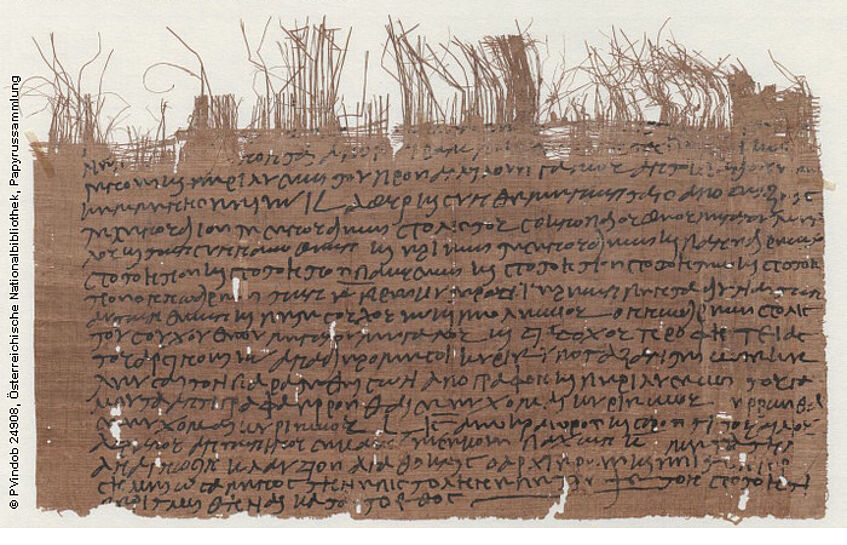Papyrology
Papyrology is a relatively young scientific discipline, yet it substantially enriches our knowledge of ancient Graeco-Roman culture, literature, economy, society, politics, legal practices and religion. The oldest sources of European literature were preserved on papyrus, just as the earliest manuscripts of the New Testament. The large majority of the c. 700.000 preserved fragments contain texts from daily life in Antiquity (documents with private and public contents, mainly in Greek, Latin, Coptic or Arabic). Through excavations in Egypt and the Near East, further papyri and ostraca (sherds with writing on them) are added to the collection every year. So far, around 55.000 documents have been edited.
The world’s largest collections of papyri are located in Oxford, Vienna (Department of Papyri of the Austrian National Library) and Berlin.
At our department, the work with papyrological sources is of great significance. In addition to the objects of the Papyrus Collection at the Austrian National Library being edited as a part of the “Corpus Papyrorum Raineri” (CPR), the inventories of many collections in other countries are being published as single publications or corpora in Vienna.


